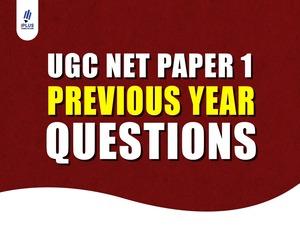1.Assertion (A) : All teaching should aim at ensuring learning.
Reason (R): All learning results from teaching.
Choose the correct answer from the following code:
(1) Both (A) and (R) are true, and (R) is the correct explanation of (A).
(2) Both (A) and (R) are true, but (R) is not the correct explanation of (A).
(3) (A) is true, but (R) is false.
(4) (A) is false, but (R) is true
Ans: (3) (A) is true, but (R) is false
- The problem of ‘research ethics’ is concerned with which aspect of research activities ?
(A) Following the prescribed format of a thesis
(B) Data analysis through qualitative or quantitative techniques
(C) Defining the population of research
(D) Evidence based research reporting
Ans: (D) Evidence based research reporting
- In which of the following activities, potential for nurturing creative and critical thinking is relatively greater ?
(A) Preparing research summary
(B) Presenting a seminar paper
(C) Participation in research conference
(D) Participation in a workshop
Ans: (C) Participation in research conference
- Assertion (A) : To communicate well in the classroom is a natural ability.
Reason (R) : Effective teaching in the classroom demands knowledge of the communication process.
Code :
(A) Both (A) and (R) are true, and (R) is the correct explanation of (A).
(B) Both (A) and (R) are true, but (R) is not the correct explanation of (A).
(C) (A) is true, but (R) is false.
(D) (A) is false, but (R) is true.
Ans: (D) (A) is false, but (R) is true
- Which of the following set of statements is correct for describing the human communication process ?
(a) Non-verbal communication can stimulate ideas.
(b) Communication is a learnt ability.
(c) Communication is not a universal panacea.
(d) Communication cannot break-down.
(e) More communication means more effective learning by students.
(f) Value of what is learnt through classroom communication is not an issue for students.
Code :
(1) (a), (c), (e) and (f)
(2) (b), (d), (e) and (f)
(3) (a), (b), (c) and (d)
(4) (a), (d), (e) and (f)
Ans: (3) (a), (b), (c) and (d)
- Two numbers are in the ratio 2 : 5. If 16 is added to both the numbers, their ratio becomes 1 : 2. The numbers are :
(A) 16, 40
(B) 20, 50
(C) 28, 70
(D) 32, 80
Ans: (D) 32, 80
- Superiority of intellect depends upon its power of concentration on one theme in the same way as a concave mirror collects all the rays that strike upon it into one point. What type of reasoning is entailed in the above statement ?
(A) Mathematical
(B) Psychological
(C) Analogical
(D) Deductive
Ans: (C) Analogical
- Which one among the following is a presupposition in inductive reasoning ?
(A) Law of identity
(B) Un-changeability in nature
(C) Harmony in nature
(D) Uniformity of nature
Ans: (D) Uniformity of nature
- Which of the following statements, regarding the term ICT is/are TRUE ?
P : ICT is an acronym that stands for Indian Classical Technology.
Q : Converging technologies that exemplify ICT include the merging of audio-visual, telephone and computer networks through a common cabling system.
(A) P only
(B) Q only
(C) P and Q
(D) Neither P nor Q
Ans: (D) Neither P nor Q
- A new Laptop has been produced that weighs less, is smaller and uses less power than previous Laptop models. Which of the following technologies has been used to accomplish this ?
(A) Universal Serial Bus Mouse
(B) Faster Random Access Memory
(C) Blu Ray Drive
(D) Solid State Hard Drive
Ans: (D) Solid State Hard Drive

